TORRE FANO: FOR 2500 YEARS THE SHOULDERS HAVE BEEN LOOKING AT US FROM THE PIRATES

Photo Source: Antonino Rampulla
When and why it was built
We know that in 1526 Torre Fano was
partially destroyed by the barbarian corsair Dragut (actually admiral of the Ottoman fleet, viceroy of Algiers, lord of Tripoli and Mahdia), habitual of looting and raiding on the Sicilian coasts. The phenomenon of
barbaresca piracy (from
Barberia, that is the name with which the Europeans from the Middle Ages defined the African Maghreb, inhabited precisely by the
Berbers), politically connected to the Ottoman Empire, between the 14th and 19th centuries it was a real scourge for the development of the Sicilian coasts. The barbarian corsairs did not limit themselves exclusively to boarding and raiding ships but were also protagonists of the
deportation and enslavement of thousands of Sicilians (for example, in Lipari, in 1544, 9000 people were deported), for them a significant source of income (a young European slave could cost even more than one house).
In 1583 the military engineer Camillo Camilliani was commissioned by Viceroy Marcantonio Colonna, on behalf of Philip II of Habsburg, to survey the defensive and sighting structures of the south-eastern Sicilian coast in order to oppose a more effective resistance to the increasingly frequent pirate raids. Camilliani, however, described Torre Fano as a
poorly functioning structure, to be overlooked in favor of the more urgent fortification of the island of Capo Passero. It would therefore seem that the construction of Torre Fano took place no earlier than the fifteenth century precisely as a response to the growing pirate phenomenon.
However
the first construction of Torre Fano is likely to have its roots in the Greek era, certainly not before the foundation of Syracuse (733 BC) and its important sub-colony Kamerina (598 BC),
part of a complex of coastal towers that put the two
polis in communication through the lighting of
fani for defensive purposes.
In Sicily, given the continuous succession of different dominations, architectural over-structuring is frequent: for example, the cathedral of Syracuse is built on a Greek temple, which it has incorporated. Considering in parallel the genesis of the nearby Torre Stampace, built in 1353 by order of Pietro d'Aragona, on the remains of a Roman fortress inside the
polis Eloro, therefore probably in turn on a pre-existing Greek structure , it is plausible that Torre Fano, although remodeled several times throughout history, has kept
original base and nucleus. Never exceeding ten meters in height and six in diameter, thus not being able to accommodate a military garrison or a cannon due to its small size, it has maintained its unique function of
signaling tower and lighthouse for mariners until the beginning from the 18th century.
 What were the fani
What were the fani
The term
fano is more likely of Greek origin than Latin. The Latin
fanum meant for the Romans
sacred, votive place, so it has little to do with a military watchtower. The Greek (transliterated)
phanos had the meaning of umination (from which, for example, the Italian
fanale ), by extension of tower with lighthouse functions. The reports were made by lighting particularly fuming fires, on their top.

The fossils of Torre Fano
Probably those who felt that no form of protection and protection was necessary for Torre Fano, would have thought that after all it was only a pile of few stones. However, in addition to the intrinsic historical importance as military architecture of plausible Greek origin, a paleologically and anthropologically interesting fact is added: the stone with which it was built has evident fossilizations for demineralization , or fossil casts.
It can take millions of years for a fossil to form. And this is not an easily verifiable and frequent phenomenon ) . A living organism, in order to become a fossil, at the moment of death must find itself in a very short time wrapped in a very fine englobing sediment, so as to be completely and quickly isolated from the external environment, sheltered from aggressors biological, chemical and mechanical (e.g. bacteria, scavengers, water).
In fact, Torre Fano is located in a very ancient area and the nearby Calafarina and Corruggi caves testify to an anthropization well before the Greek colonization. It is in fact between Marzamemi and Portopalo di Capo Passero close to an area that should be studied much more in depth than what was done at the beginning of the last century by the archaeologist Paolo Orsi, that is district Cugni, in which there are also evident traces of Greek and Roman settlements, but the existing laws in Italy encourage put any finds quickly back into the ground ).
It is unlikely that the builders of Torre Fano had chosen the material with which to fill the core of the structure with capillary attention, selecting almost exclusively stones with fossil traces (among other things, for what purpose?) Even less likely is that they had transported it from a place far from the one chosen for its construction. In short, those stones were there and those used.

What remains of Torre Fano
Today the ruins of Torre Fano lie in a square with an incredible panorama of the Gulf of Noto, at the mercy of improvised writers and who would like to make it an ecological island for the collection of undifferentiated, without a shred of fence or a sign with that minimum of historical information that could perhaps make those who intend to carry out their love intentions on these desist.
To learn more, I recommend reading the text Torre Fano by Antonello Capodicasa and Pachino over timeby Giuseppe Drago.
Text Source: Antonino Rampulla
ARCHIVE NEWS
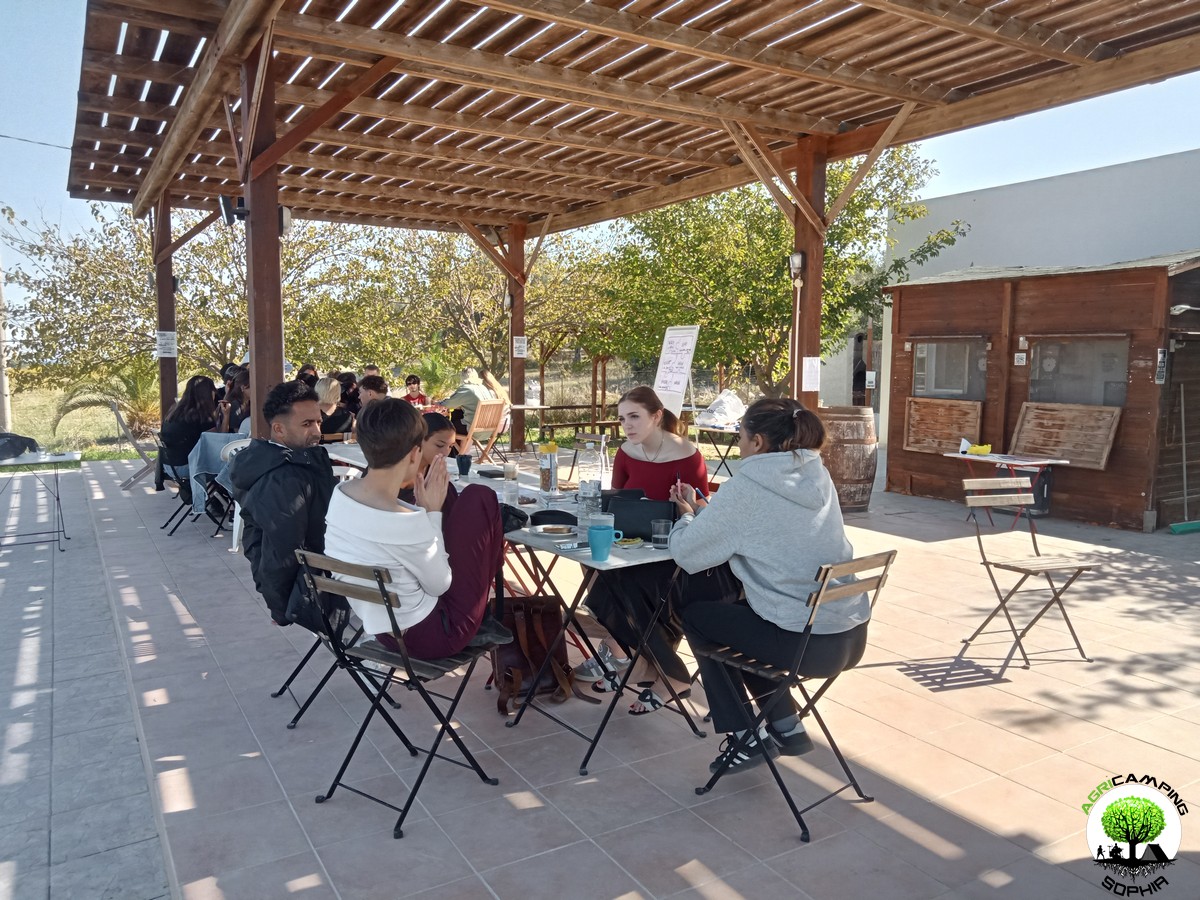 DO YOU WANT TO ORGANIZE AN ERASMUS AT AGRICAMPING SOPHIA?
DO YOU WANT TO ORGANIZE AN ERASMUS AT AGRICAMPING SOPHIA?
WHAT IS AGRICAMPING SOPHIA?
It is a campsite with tent pitches, glamping tents, mobile homes and bungalows
WHERE IS IT?
In Italy, in Sicily, near Syracuse, in Pachino: 36.736883, 15.095610
HOW TO CONTACT US?
info@agricampingsophia.it
(SPEAK ENGLISH) +39 3473079242 – (ONLY SPEAK ITALIAN) +39 3452396095
WHAT DO WE OFFER?
We offer hospitality and catering for Erasmus projects
FOR HOW MANY PEOPLE?
We can have 4-7 single beds in the Socrate Bungalow, 6-10 single beds in the Platone Mobile Homes, 4-6 single beds in the Aristotele Mobile Homes, 4 single beds in the Iblone Mobile Homes, 4 single beds in the single beds in the Empedocle Glamping Tents. In total we therefore have 18 comfortable single places or 31 single places with a fair spirit of adaptation.
IN WHICH PERIOD CAN AGRICAMPING SOPHIA BE AVAILABLE?
The most suitable periods to use our services...
 CART RUTS MODELED ON SOFT ROCK?
CART RUTS MODELED ON SOFT ROCK?
Read also RACK OR HOUSING FOR CLOGS?
Some cart ruts from the Targia district, in Syracuse, and most of the cart ruts from Granatari Vecchi, in Rosolini, give the impression of having been impressed, modelled, on a rock that was originally viscous, not entirely solid. As absurd as this hypothesis may seem, especially in Granatari Vecchi, the softness of the shapes and the at least anomalous uniformity of the rock bank, as if it were a concrete casting, which hosts the cart ruts, is unicum compared to the lithic context in the area.
In Targia this phenomenon is less impressive but if we consider the cart ruts essentially cart tracks, therefore furrowed roads indirectly resulting from the repeated passage of carts along the same route, we do not understand why such uniformity and smoothness is present, in the majority of cases, also on the parts not affected by the passage of the...
 RACK OR HOUSING FOR CLOGS?
RACK OR HOUSING FOR CLOGS?
Read also CART RUTS CUT FROM QUARRIES
In the presence of slopes, even slight ones, in some cart ruts in the Targia district, in Syracuse, central holes are found with a diameter of between 30 and 50 centimeters and a depth of 15-20 centimeters, spaced about 50 centimeters apart. Neither the position (they are not exactly in the center of the cart ruts and perfectly aligned with each other), nor the shape appear perfectly regular: either the passage of time and any wear have profoundly modified their original shape or, simply, they have never had a systematic regularity. However, the offset in position between one hole and another is never completely “off-axis”: there is always a portion about twenty centimeters wide that coincides with the same portion of the previous and subsequent hole. The best preserved and most defined holes are found in the cart ruts usually called Scala...
 CART RUTS CUT FROM QUARRIES
CART RUTS CUT FROM QUARRIES
Back to CART RUTS AND A FEW TOO MANY PROJECTIONS
I will skip any preamble, referring to what has already been written regarding the presence of cart ruts in south-eastern Sicily.
The easy academic tendency has been, in most cases concerning cart ruts, to consider them in terms of the latomie, or quarries, with which very often (for example in the cases of the Targia or Pizzuta districts) they share the same territory.
According to this theory, the carraie would have been indirectly created due to the wear of the rock at each passage of carts or sleds loaded with extracted stone blocks. I will not repeat the arguments presented so far in order to demonstrate that this is a theory that has little solid foundations on an in-depth analysis of the cart ruts. However, I will add a piece by demonstrating the implausibility of a connection between them in both chronological and functional...
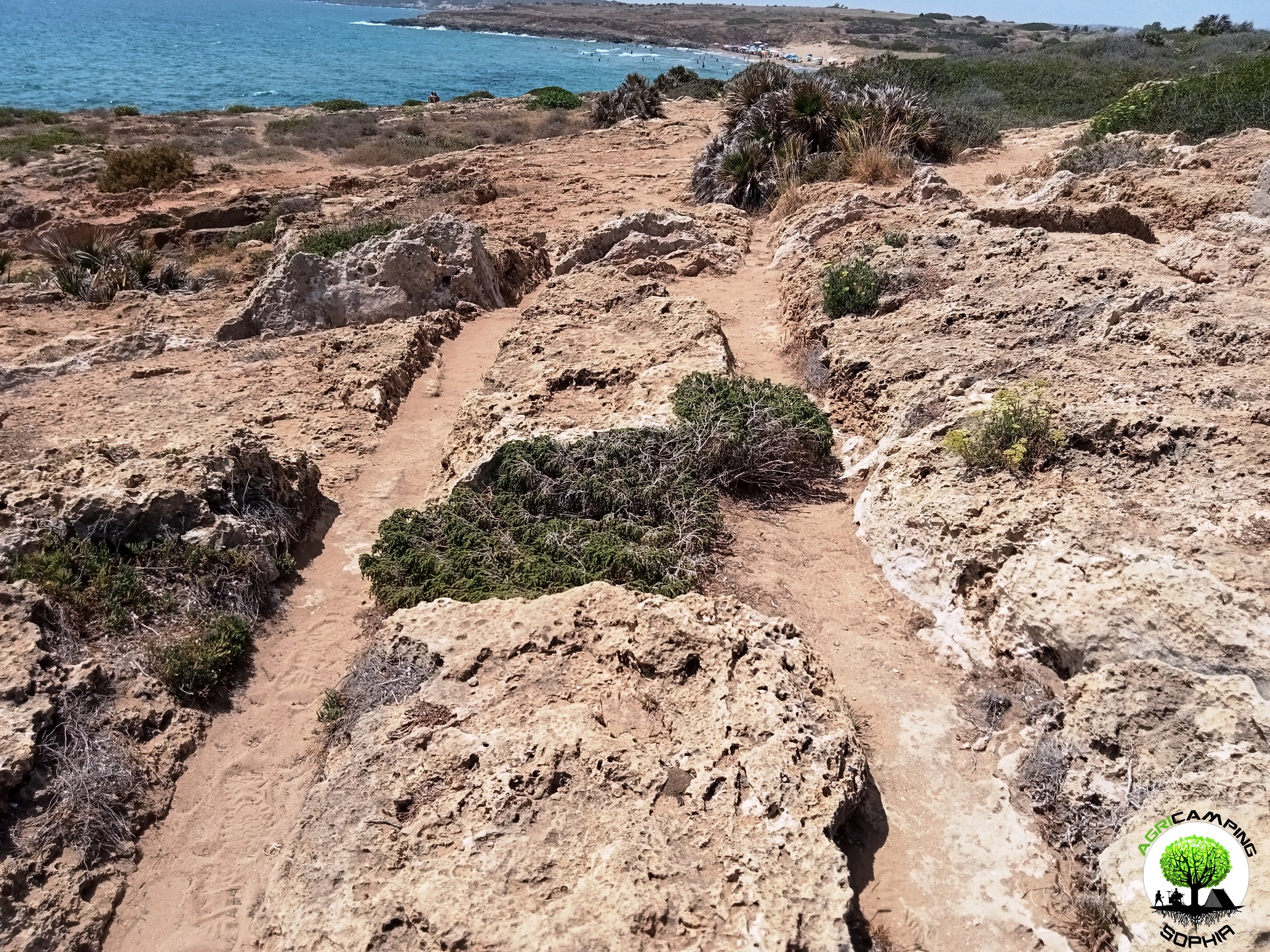 CART RUTS AND A FEW TOO MANY PROJECTIONS
CART RUTS AND A FEW TOO MANY PROJECTIONS
Read also THE POLISHING OF THE CART RUTS
I will skip any preamble, referring to to what has already been written regarding the presence of cart ruts in south-eastern Sicily.Considering the possibility that the cart ruts were gradually dug by the passage of carts pulled by pack animals, for example pairs of oxen, observing certain sections of the cart ruts present in the Granatari Vecchi district, in Rosolini, and in the Pizzuta district, close to the Vendicari Reserve, two questions arise:
1. Why force the animals to pass over rough surfaces and protrusions high, compared to the base of the furrows, even 60-70 centimeters?
2. Why, in the presence of such obstacles, not opt for a detour?
For Mottershead, Pearson and Schaefer such protrusions appeared later, since at the time of the passage of the wagons, a layer of earth covered the rocky bank, thus not making the obstacle...
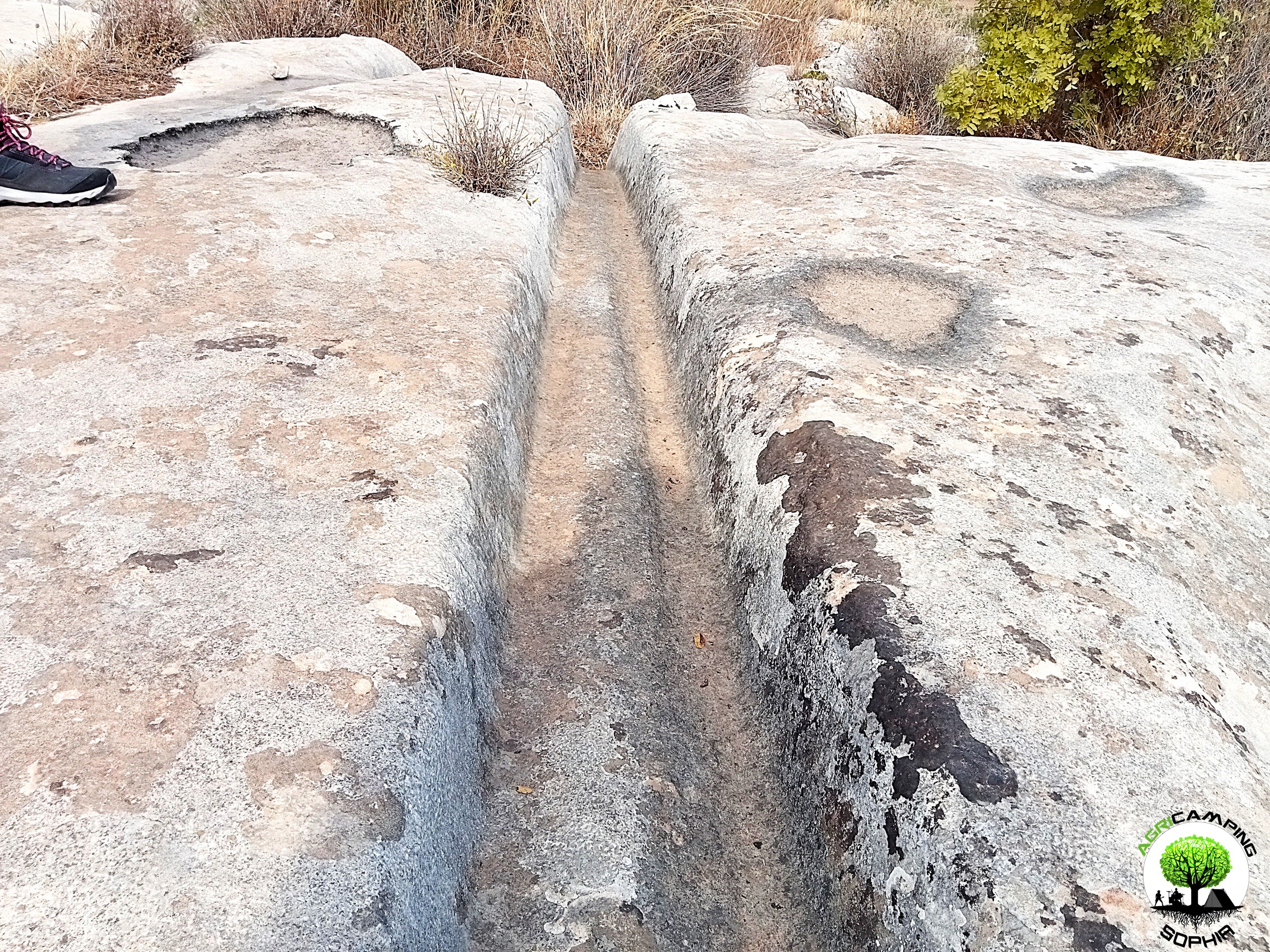 THE POLISHING OF THE CART RUTS
THE POLISHING OF THE CART RUTS
Read also THE PROBLEMATIC EDGES OF THE CART RUTS
I will skip any preamble, referring to to what has already been written regarding the presence of cart ruts in south-eastern Sicily.
To proceed with this comparison I have chosen a probable capital and the corner of a recess present in a block of the northern walls of Eloro that would seem to resemble a pinax, that is, a niche that would have housed a fresco of the heroa, but which a more careful observation refers to a system functional to the grip of the block through a pincer winch. Both elements, like the curt ruts, have remained at the mercy of the elements for millennia, and are therefore subject to comparable wear and tear due to the passage of time. The finishing of the capital should be of a high standard, since it is an architectural element that also has an aesthetic function. The recess, on the other hand, should have...
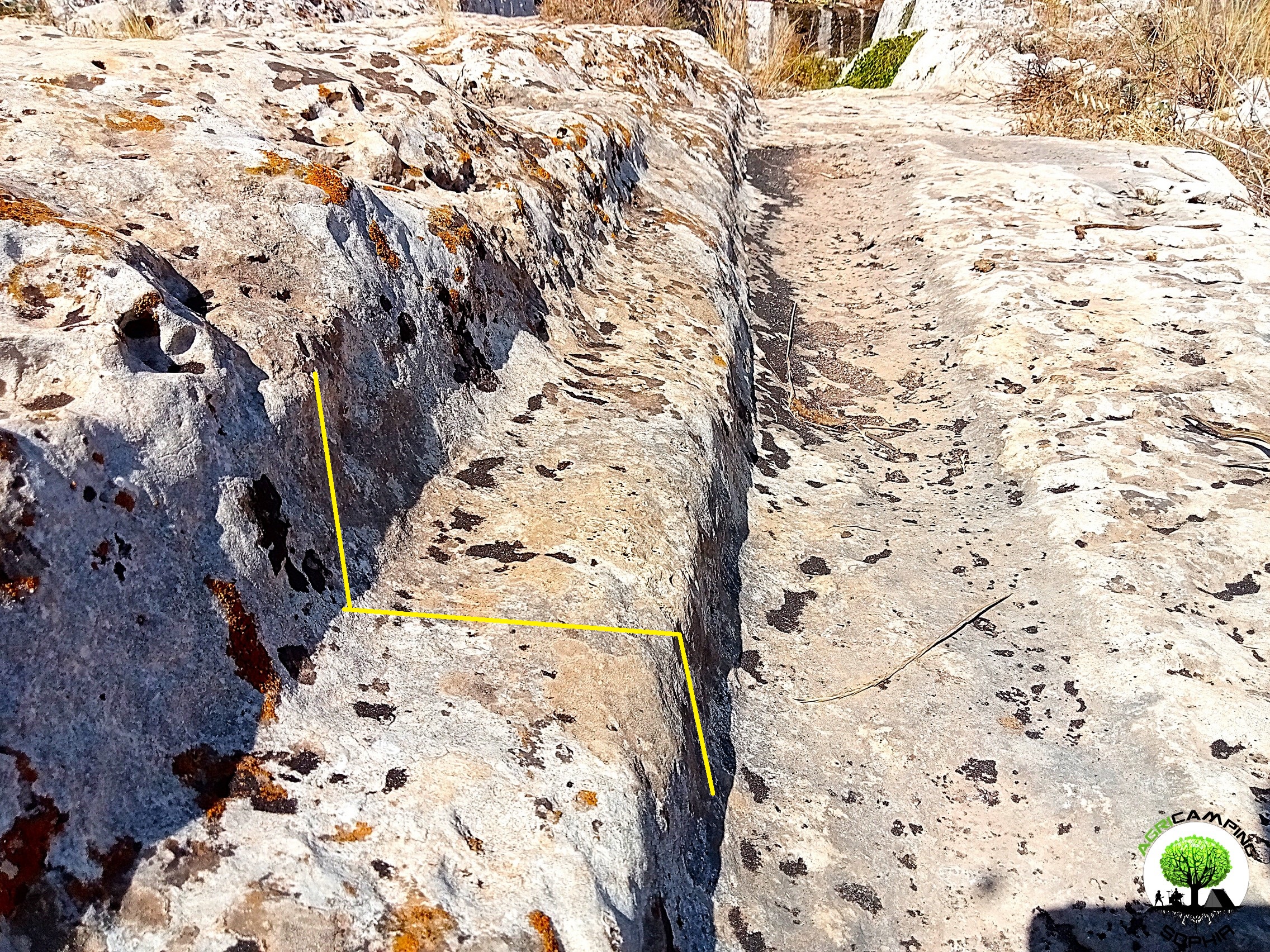 THE PROBLEMATIC EDGES OF THE CART RUTS
THE PROBLEMATIC EDGES OF THE CART RUTS
I will skip any preamble, referring to to what has already been written regarding the presence of cart ruts in south-eastern Sicily.As can be seen in other sites around the world, in some cart ruts I visited, in particular in the Cugni district in Pachino, in the Granati Vecchi district in Rosolini and in the Targia district in Syracuse, a clear border can be seen, a sort of frame, next to the grooves, more marked externally, barely noticeable internally.
The borders I measured have a width of 14-20 centimeters and a height of 8-10 centimeters.
Not all cart ruts have such frames present or particularly evident, regardless of the degree of wear or degradation. They are found above all in cart ruts with less deep grooves.
As already described in detail, given the presence of furrows with a depth of even 65-70 centimeters, the wheels of a possible vehicle would have had to have a...
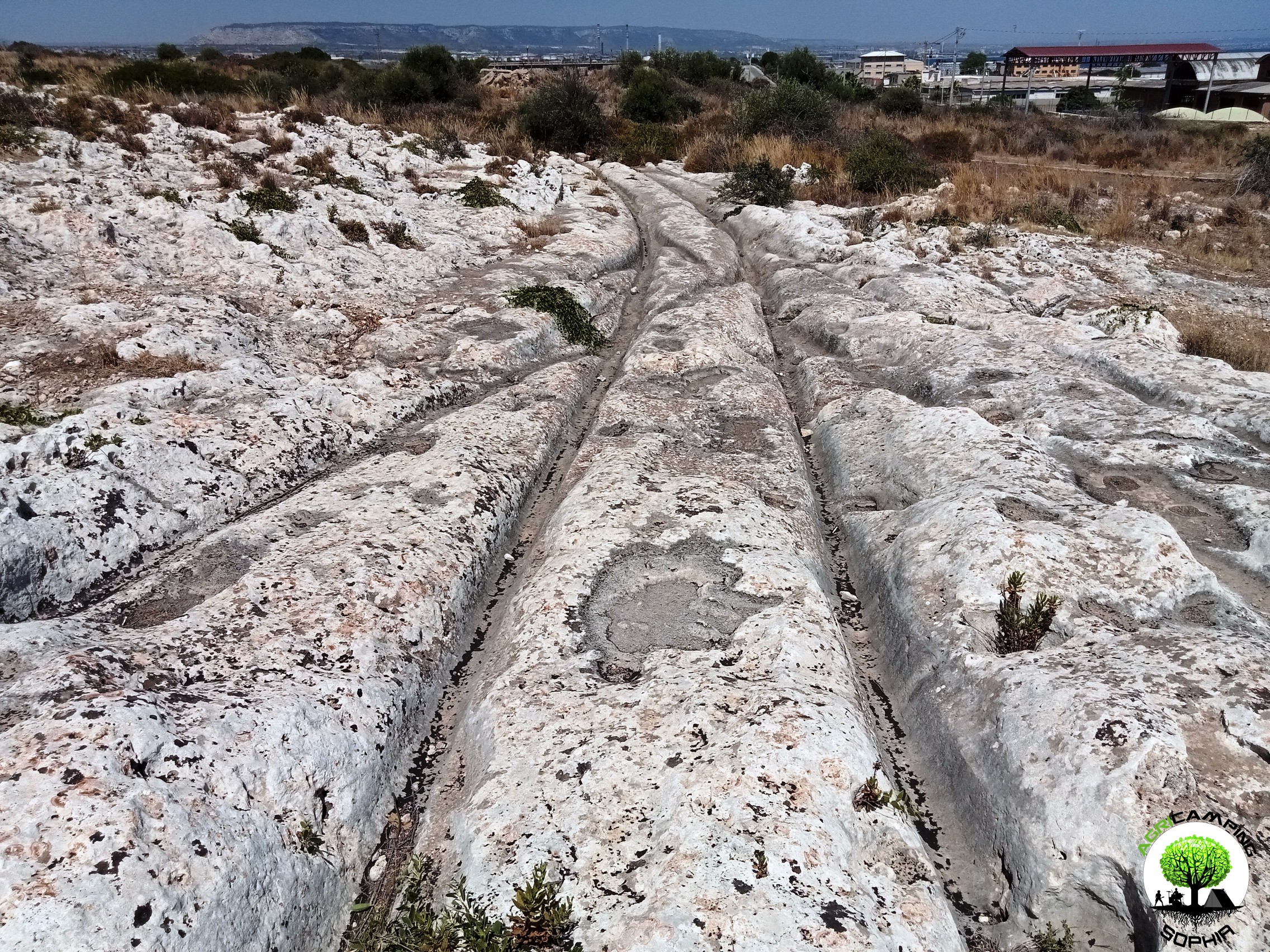 THE PROBLEM OF CART RUTS IN SOUTH-EASTERN SICILY (PART FOUR)
THE PROBLEM OF CART RUTS IN SOUTH-EASTERN SICILY (PART FOUR)
Click here to return to third part
Clapham Junction
As in the Maltese site Misrah Ghar Il-Kbir, also in the Targia and Granatari Vecchi districts the cart ruts intersect and cross each other in a similar way to the track switches in a railway station. The nickname Clapham Junction that was given by David H. Trump to the Maltese site, derives precisely from the similarity with the famous English railway station. For Sagona these are agricultural furrows and water channels, for Mottershead, Pearson and Schaefer these are abandoned paths due to obstacles and wear. Obviously we do not know what the morphology of the Syracuse and Rosolini territory was at times when the cart ruts were traced, but considering the current context, there certainly would have been no agricultural reason to build them, given the presence of fertile land, springs and fresh water courses just a few kilometers...






 DO YOU WANT TO ORGANIZE AN ERASMUS AT AGRICAMPING SOPHIA?
DO YOU WANT TO ORGANIZE AN ERASMUS AT AGRICAMPING SOPHIA? CART RUTS MODELED ON SOFT ROCK?
CART RUTS MODELED ON SOFT ROCK? RACK OR HOUSING FOR CLOGS?
RACK OR HOUSING FOR CLOGS? CART RUTS CUT FROM QUARRIES
CART RUTS CUT FROM QUARRIES CART RUTS AND A FEW TOO MANY PROJECTIONS
CART RUTS AND A FEW TOO MANY PROJECTIONS THE POLISHING OF THE CART RUTS
THE POLISHING OF THE CART RUTS THE PROBLEMATIC EDGES OF THE CART RUTS
THE PROBLEMATIC EDGES OF THE CART RUTS THE PROBLEM OF CART RUTS IN SOUTH-EASTERN SICILY (PART FOUR)
THE PROBLEM OF CART RUTS IN SOUTH-EASTERN SICILY (PART FOUR)